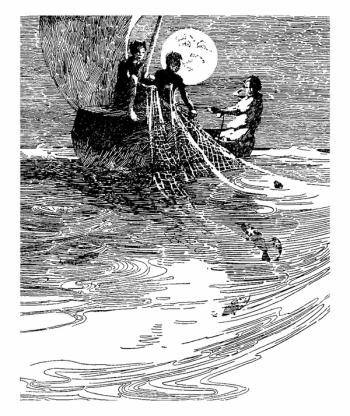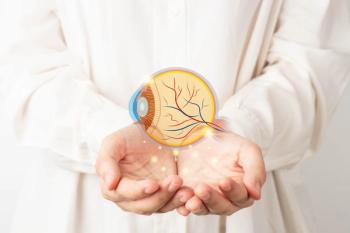
Q&A: Steven Loomis, OD, President of the American Optometric Association
I grew up in Butte, Montana. My dad was truck driver. He worked for Standard Oil, and he delivered gasoline to the gasoline stations there and the farmers in the area. It’s a beautiful place, phenomenal place, to grow up. Butte always had the reputation for being a little rough because it’s a mining town, but it’s just how I grew up.
Where did you grow up?
I grew up in Butte, Montana. My dad was truck driver. He worked for Standard Oil, and he delivered gasoline to the gasoline stations there and the farmers in the area. It’s a beautiful place, phenomenal place, to grow up. Butte always had the reputation for being a little rough because it’s a mining town, but it’s just how I grew up.
What were your plans for your career when you graduated from Pacific University College of Optometry?
My wife is an Auburn grad. She wanted to move to the southeast, and I wanted to stay in the northwest. So, we decided to settle in Denver briefly because I had a job offer. The plan was for me to take the job offer, and we would figure it out later. I always say I moved to Denver temporarily in 1979-I’m still here until we figure where we want to live permanently. [Laughs]
How did you get involved in leadership?
When I was going to school at Pacific, Oregon had a diagnostic pharmaceutical agent (DPA) law, so we were able to dilate and use anesthetics. Then I came to Colorado, and I couldn’t do those things. I worked at a Kaiser Permanente, a large HMO, on the same floor as the ophthalmology department, but I was not allowed to do tonometry because I couldn’t use an anesthetic. Their solution to that was to hire an 18-year-old technician who worked under the ophthalmologist’s authority, would put the drop in for me, and she would do the tonometry. I was so upset about that, that frustrated me. So, I became a member of the Colorado Optometric Association and I wanted to learn how to fix that. I was politically naïve; I didn’t understand advocacy and what associations did. The COA said you need to contact your representative and your senator, and that seemed overwhelmingly scary. Ultimately I did that and figured out that they were just people like me. I developed a love for the political arena in general. You get named to a committee, and pretty soon you’re the chairman of the committee, and then pretty soon they say, “Do you want to be on the board?” You grow within the structure. I always liked serving the profession. I don’t ever recall saying no when asked to do something for the association.
What advice do you have for new ODs wanting to get involved?
We are always looking for talent. If a new OD wants to be involved in the association, all he has to do is pick up the phone and say, “I want to be involved in the association.” I think that it’s a little tougher to be involved immediately at the AOA level just because it’s the national organization, but every state association just like my own is more than happy to have the involvement of young ODs. They simply have to make themselves available. Then, they honestly have to follow through; if they’re assigned a task, do it. I don’t think it’s hard to be involved with leadership if that’s what you want to do.
What do you do for down time?
What’s that? [Laughs] It’s been hard to find down time since I took this job because I still practice. I don’t make my living being AOA president. We ski here in Colorado. I have three great kids and five grandchildren, and I love to spend time with my kids and my grandkids.
Why bow ties?
Many years ago, my father-in-law was here in Colorado visiting and he went to Nordstrom’s and bought a new shirt and a bow tie. It was at time when I was getting my own practice established, and he gave this to me. He said, “I think you should try wearing a bow tie because everyone remembers the guy in the bow tie.” That bow tie sat in the box for months. I had no idea how to tie it. I ordered a VHS tape from a bow tie company about how to tie a bow tie. I started wearing the bow tie at work. And it was true, people enjoyed it, they would make fun of it but it was always tongue-in-cheek. Then I started liking it. It was always a conversation opener with patients. If I didn’t wear the bow tie, referred patients would say, “I thought you wore a bow tie.” So, I’ve kept it up and have had the bow tie ever since.
What are the three biggest challenges you see facing the AOA’s future?
I think number one is keeping an active membership base. Right now, the baby boomers are retiring faster than the millennials are joining. We’re not in trouble yet. I want to be sure we keep a strong membership base, and I don’t think that is necessarily going to be easy. When I joined, it was the culture-you joined the association. But that’s not the culture with the new generation. They want to know why. They want the value proposition. The next challenge is trying to keep up with the rapid change of how health care is delivered-the criteria for success looks a little different than it used to. We have to be very nimble in how we react to the delivery of health care. Thirdly, as the population demographic changes, the need for eye care is greater and greater. We need more optometrists providing the care that the population’s going to require, but the models are going to be different in how that’s delivered. Our practices have to look more medically oriented, they have to look less materially oriented, and we have to keep up with those changes.
How is AOA encouraging ODs to become more engaged in advocating for the profession?
It’s important for every OD to understand that he is a personal advocate in his own office. Sometimes that’s real obvious. Sometimes she has her senator or representative as patient, but she also has other business leaders in her practice. Advocating with your own patients who are business leaders is what this profession is all about. ODs have to go outside the walls of their practices. There are lots of areas where they can advocate for optometry. They can do it at the schools. They can do it at the Rotary Club. It’s important for optometrists to recognize we have a lot to offer, and we have to take our message to the public at every opportunity.
What’s your one big goal to achieve before leaving the presidency?
Stay married. [Laughs] I want to be sure that I leave the association in a good advocacy position. We’re currently implementing new membership strategies, and I want to get that off the ground. We have a new communications company that we’re working with, Edelman; I want to be sure that’s in good shape before I leave. So, when I turn the keys over to Dr. Thau, she’s got a car that’s running well.
Do you have any regrets?
I don’t think so. I love this profession. There was a day in my office when I was taking care of an elderly woman; her daughter brought her in. She realized her daughter was in with her granddaughter picking up glasses. Oh my goodness, we had four generations of the same family in the office at the same time just by happenstance. So I said, “We have got to get a picture of this.” I had the teenager picking up her contact lenses, her mom who was doing something with her glasses, her mom who was bringing her mom in. I love that picture because I don’t know very many professions where you care for four generations. So I have patients who are in their 90s, I have patients who are 6 months old. That’s what I love about this profession. I love that we make a difference in people’s lives.
What’s the craziest thing you’ve ever done?
[Laughs] I jumped out of a perfectly running airplane-I went sky diving. I did my undergrad at Montana State. My roommate and I saw a flier for the skydiving club, so we decided to do it. They put us up in this airplane, then they took the door off-you sat on the floor with your left cheek still on the airplane and your right cheek was not. They said, “Time to jump,” and I said, “I’d like to think about this for a bit.” [Laughs] They said, “No, it’s time,” gave you a shove, and out you went.
Newsletter
Want more insights like this? Subscribe to Optometry Times and get clinical pearls and practice tips delivered straight to your inbox.


















































.png)


